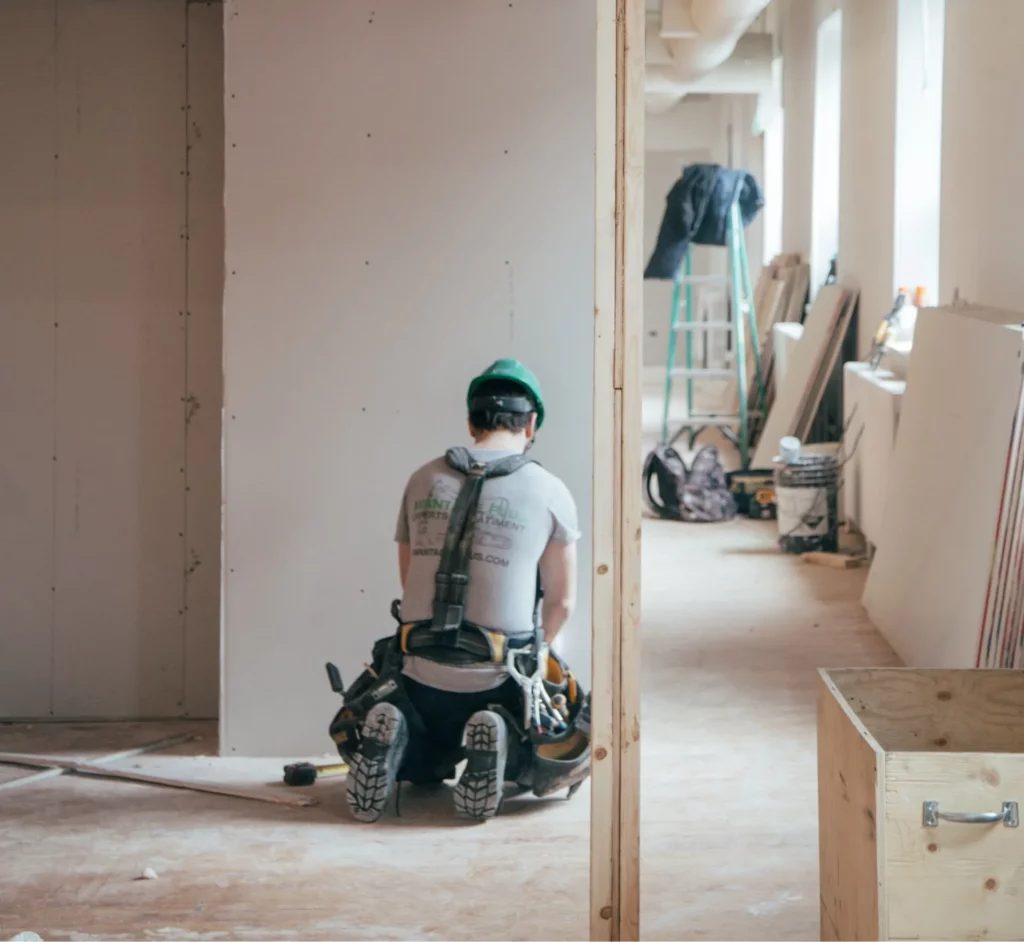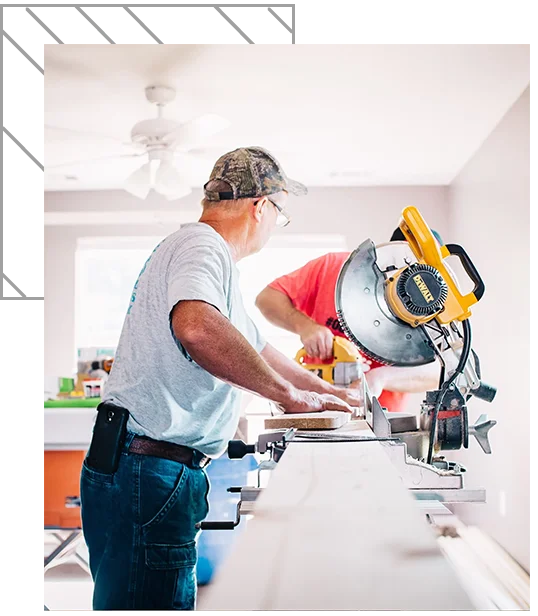Step by Step ADU Guide
New rules adopted in July 2019 make it even easier to create an ADU in Seattle. But where should you start? Follow our step by step guide.
Get started
New rules adopted in July 2019 make it even easier to create an ADU in Seattle. But where should you start? First, confirm that your property meets the baseline requirements for an ADU. Then familiarize yourself with the regulations for attached ADUs (AADUs) or detached ADUs (DADUs). Coupled with the characteristics about your property, these regulations will in part determine what you can build.
Read more:
The sections below describe steps in the ADU process. These may seem like small projects, but with design, permitting, and construction, expect to spend at least a year on your ADU, if not longer — though the timeline could vary widely depending on the nature of your project.
Is your property eligible for an ADU? Our ADU feasibility tool can answer initial questions about the opportunities and challenges you might encounter creating an ADU on your lot.
Design
Once you have some initial ideas about what’s possible on your property, you’ll want to think about the design process.
First, consider how you plan to use your ADU.
- Who will live there?
- Will you rent it out to a short-term or long-term tenant?
- Will family members or a caregiver be staying in the ADU?
Maybe you’re planning to downsize into the ADU yourself.
- What type of dwelling would suit these occupants?
- How much space do they need?
- How many people are in their household?
- Are they comfortable using stairs, now and in the future?
Now consider how you want to develop the design. Most people hire an architect, designer, or homebuilder to help them create a design and prepare construction plans. If you engage a professional early in the process, they can also help you think about how the ADU will meet your needs and evaluate the feasibility of your site. Or you can hire them once you have a more complete idea and develop plans to suit it.
Financing
For homeowners considering an ADU, determining how to pay for it is often the biggest hurdle. The cost to build an ADU can vary widely. Converting existing space in your basement might cost much less than constructing a new structure in your backyard. For a DADU, the size, design, finishes, and site conditions for your project can have all a big effect on cost. Your architect or builder will be able to help you estimate the project budget.
How will you pay for your ADU? Homeowners commonly borrow some or all of the total project cost. Because most banks do not offer an ADU-specific loan product, some homeowners borrow against their equity through a home equity loan or home equity line of credit (HELOC). Others may take out a construction loan. ADU financing does present certain challenges. Many lenders do not allow future rental income from the ADU to factor into the qualifying income for the homeowner applying for the loan. For this and other reasons, it’s common for homeowners to use a combination of sources — cash, home equity, loans — to realize their ADU project.
Another financial consideration is how you’ll use your ADU. If you anticipate rental income, whether from short- or long-term tenants, financing construction may be more feasible since rents will help you cover your monthly debt service. If your ADU is for occasional house guests or family, your budget may differ. One scenario some homeowners consider is establishing their ADU as a condominium. Doing so involves additional steps and up-front costs and alters the ownership of your property. But it lets you sell your ADU to another homeowner, which could help you recoup your investment more quickly and may create a relatively lower-cost option for homeownership in your neighborhood.
Permitting
Before you can build your ADU, you’ll need a construction permit from the Seattle Department of Construction and Inspections (SDCI). Your permit application will be reviewed for compliance with zoning rules in the Land Use Code, structural requirements in the Residential Code, energy efficiency standards in the Energy Code, and drainage regulations in the Stormwater Code. Other types of review might also apply depending on the characteristics of your site and whether your project involves tree removal.
The first step in obtaining a permit is to create an account on the Seattle Services Portal so that you or your designer can upload permit documents. Submit your site plan and a Building & Land Use Pre-Application through the portal. SDCI will confirm the legal description and address of your property and assign you a record number (in the format of 6XXXXX-CN). We’ll let you know if your project requires a Pre-Application Site Visit.
Next, schedule an intake appointment. The next available appointment might be a few months out, but when you schedule your intake and submit your completed application materials, your project is automatically added to the intake express lane, which means you’ll receive an email notification when an earlier intake appointment becomes available.
Then you’ll prepare and upload your application documents. These include a detailed site plan, floor plans, exterior elevations, and structural drawings. For a full list of what’s required, we suggest you review these helpful tip sheets:
- Tip 103: Site Plan Requirements
- Tip 106: General Standards for Plans and Drawings
- Tip 303: Applicant Responsibilities and Plan Requirements for Single Family and Two-Unit Dwelling Units
- Tip 303A: Common Seattle Residential Code Requirements
If you use a pre-approved DADU plan, this timeline will be shorter. For most sites, we can issue your building permit in 2-6 weeks.
Along with a construction permit, you may also need:
- An electrical permit for any electrical work
- A plumbing permit from Public Health — Seattle & King County
- A side sewer permit, if you are connecting to an existing side sewer
You’ll also be required to include a completed King County Residential Sewer Use form as part of your construction permit application. SDCI uses this information to notify the County of new connections to the sanitary sewer system, which trigger a sewage treatment capacity charge. The capacity charge helps King County cover the costs of sewer improvements and support expansion projects needed to serve new residents. The charge is paid monthly for 15 years or in one lump sum at a discount. In 2020, the rate for ADUs (both attached and detached) was lowered and is less than the rate for single-family homes. Read the County’s brochure for details.
Do you have a question about these permitting requirements? You can send SDCI a land use question through their online form.
Construction
This is where we come in!
Once you have all the necessary permits, you are ready to begin construction. Note that any changes you choose to make to your original plans may require additional review by SDCI.
Many ADUs involve traditional stick-built construction. Depending on the design of your project, you might consider nontraditional construction methods where some or all of your ADU is built in a factory off-site and transported to your property. These pre-fabricated or modular units can help you save money or shorten construction time on site. They may also involve unique requirements or costs, like trucking, the cost and logistics of using a crane, or challenges with accessing and delivering material to your backyard. Factory-built structures built entirely off-site are reviewed and approved by the Washington State Department of Labor & Industries.
During and after construction, your ADU project will require one or more inspections. Typically this involves construction inspections, electrical inspections, and site development inspections. A side sewer inspection might also be necessary depending on the work involved in your ADU. You can schedule inspections through your account on the Seattle Services Portal.
Moving in
After a final inspection, the occupants of your ADU can move in. If you plan to rent your ADU, you will now be a landlord. As a housing provider, you should become familiar with your responsibilities and with Seattle’s rental regulations. A great place to start is Renting in Seattle, a comprehensive resource of information, regulations, and tips for successful renting.
If you have an ADU to rent, you’ll need to register it under the City’s Rental Registration and Inspection Ordinance (RRIO). The RRIO program establishes minimum standards to ensure rental housing in Seattle is safe and meets basic maintenance requirements. All rental property owners in Seattle must register, and at least once every 5-10 years an inspector will verify that your ADU meets housing safety and maintenance standards.
Using your ADU as a short-term rental on platforms like Airbnb? If so, you’ll need a license and must follow the City’s short-term rental regulations.
You’ll also need to abide by fair housing laws, which aim to prevent discrimination and protect the rights of tenants to access and maintain their housing. Most of these rules apply to all rental housing, but some requirements do not apply to ADUs. Seattle’s First-in-Time requirements, which require landlords to offer tenancy to the first qualified applicant, do not apply to ADUs. The Fair Chance Housing Ordinance, which helps prevent unfair bias in housing against renters with a past criminal record, does not apply to an ADU when its owner also lives on the property. We also have laws concerning accessibility that ensure people with different abilities can live safely and independently.
When you’re ready to market your ADU for rent, note that fair housing laws still apply. Focus on advertising the characteristics of your ADU and avoid language that shows a preference or limitation for people in protected classes. Consider listing your ADU with the Housing Choice Voucher program administered by the Seattle Housing Authority, which guarantees rent, includes free inspections and listings, and lets you provide a place to live for a low-income individual or family. If issues arise during your landlord–tenant relationship, ensure you follow guidelines for issuing notices, increasing rent, accessing the unit, and handling emergency situations.

Ready to build? Request a paid Site Visit.
Site visits are required to spec the feasibility, cost, and design of your ADU project. The cost of the Site Visit is applied towards your build.
Please fill out the form to request a paid site visit
* All fields are required.
or call (206) 222-2898 for a faster inquiry.

How ADU Construction Process Works
1. Send a request
First things first – send a request to us to start the process.
2. Site Walk-through
We will do a walk-through of your property to scope out the project and look for any issues.
3. Design & Planning
Choose a building design and plan to the specifications of your property.
4. Permitting
Permits in the city of Seattle are mandatory and we help you along with the process.
5. Build
Once everything is approved we will start the building process.
6. Completion
After the build, we always do quality control and inspection for project completion.